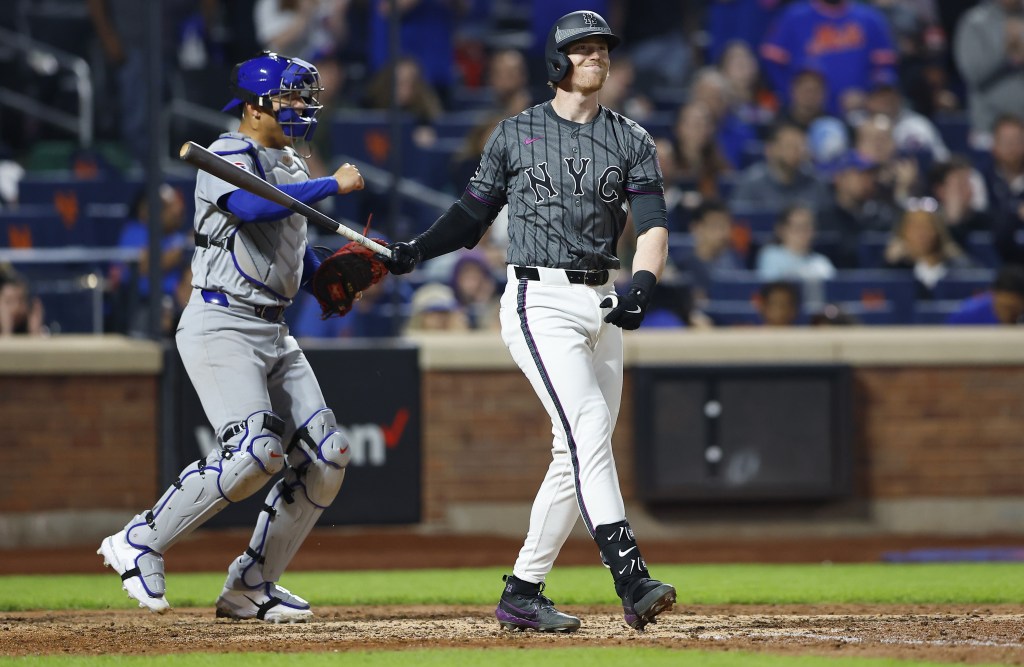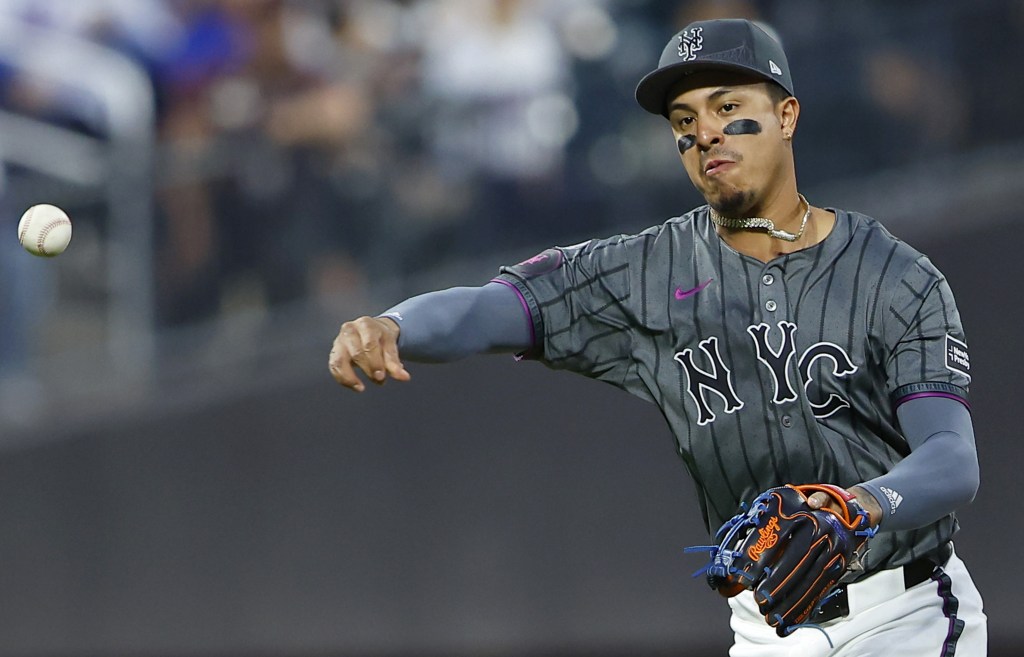If there were any doubts about the Mets’ third-base job, Tuesday’s demotion of Mark Vientos settled them.
In optioning the slugger back to Triple-A after a short and successful stay in the majors, the Mets again affirmed that Brett Baty is their primary third baseman, even as the 24-year-old’s bat faces several questions.
After a strong start to his season, Baty had cooled and entered play Tuesday in a 3-for-26 funk, his OPS down to .632.

The message from his manager: This is a slump and not a sign that Baty’s bat, which struggled through his rookie season last year, is not ready for major league pitching.
“He’s a kid that is putting in a lot of work, and he’ll get through it,” Carlos Mendoza said before the game against the Cubs at Citi Field. “We’re pretty confident that we’ll get the player that we know he’s capable of being.”
Baty, a former top prospect who routinely crushed minor league pitching, showed signs of breaking through early in the season and was hitting .305 with a .732 OPS on April 16, when he exited a game with hamstring tightness.
Baty was out of the lineup for several days, and hitting coach Eric Chavez believes Baty is still working to recover his timing at the plate.
Perhaps Baty will quickly regain his form, but a couple of his hitting trends have hinted at issues he must work through.
Entering play, Baty’s under-the-hood numbers were far different than last year’s: He was striking out at a much lower clip (in 17.6 percent of his at-bats after posting a 28 percent strikeout rate last year) and striking the ball with less authority (his average exit velocity falling from 89.5 mph last year to 84.9 mph this season).

The picture that is painted is of a hitter who might be sacrificing power for contact, but Baty expressed surprise at the advanced numbers. He guessed he might be more successful than last season at shortening up with two strikes, but he said more contact and less power is not an objective.
“Honestly we wouldn’t mind flipping that,” Chavez said about Baty’s strikeout dip and power decrease. “We’d rather have him hitting the ball hard and maybe more strikeouts. There’s always a give and take in what you’re trying to accomplish.
“But that’s definitely not the goal. He can hit the ball at an elite level. We need him to start doing that as opposed to making contact, trying to be too careful.”
Baty, who clubbed 19 home runs in 95 minor league games during his breakout 2022 season, entered play with one home run and two doubles in his first 26 games this season.
“I haven’t really done anything different,” said Baty, who added his approach is unchanged this season.
Also largely unchanged is a struggle for Baty to hit balls in the air. Coming up through the minors, his proclivity toward hitting the ball hard — but on the ground — continued to pose a problem.
There have been several tweaks to Baty’s swing in the past few years to generate more loft, but Baty has been among the most frequent worm-killers in baseball this season. Entering play, his 55.2 percent ground-ball rate (according to FanGraphs) was the 13th highest among 182 qualified hitters.
If Baty begins to tap into his power, he would need to ensure his power can make it past the infield.
“It’s still too low,” Chavez said about his fly-ball rate. “It’s something we’re going to keep an eye on. The goal is to hit the ball in the air, but I think from his standpoint is: How do you do it? … As we go here, this is going to be a journey for him. [Co-hitting coach] Jeremy [Barnes] and I are going to have to help guide him through that and make some changes along the way.”
Baty, with an impressive minor league résumé and an improving glove at third base, will continue to get most of the playing time because the club believes he can turn a corner.
The Mets are showing faith in a player who they believe will continue to adjust.














